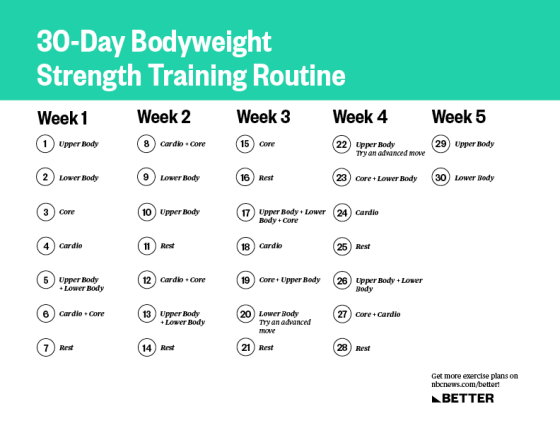Home » Slim Down with a Personal Trainer
Slim Down with a Personal Trainer
what a personal trainer is and how they can help with weight loss?

A personal trainer is a fitness professional who designs and oversees a customized exercise program for clients. They typically have education and certifications in areas such as exercise physiology, kinesiology, and fitness. Personal fitness trainers can help with weight loss by providing expert guidance on exercise and nutrition, creating a personalized workout plan, providing motivation, and keeping clients accountable. They are trained to help clients set realistic goals, design a program to meet those goals, and track progress over time. Personal trainers can also provide education on proper form and technique for exercises, which can help clients achieve results more quickly and avoid injury. Additionally, they can modify the workout according to the client’s health condition or physical abilities, to ensure safe and effective training. Overall, a personal trainer can be a valuable asset for anyone looking to lose weight and improve their overall health and fitness.
Benefits of working with a personal trainer, such as accountability and customized workout plans:
Accountability: A personal trainer can provide accountability and motivation to help clients stick to their workout and nutrition plans. They can help clients set realistic goals and check in regularly to track progress and make adjustments as needed.
Customized Workout Plan: Personal trainers create workout plans tailored to the specific needs, goals, and fitness levels of their clients. They take into account factors such as the client’s current fitness level, medical history, and any physical limitations, which ensures that the workout plan is safe and effective.
Expertise: Personal trainers have education and certifications in areas such as exercise physiology, kinesiology, and fitness, which means they have the knowledge and expertise to design a safe and effective workout plan for weight loss.
Variety: Personal trainers can incorporate a variety of exercises into the workout plan, including cardio, strength training, and flexibility work, which can help to keep clients engaged and motivated.
Safety: Personal trainers can provide instruction on proper form and technique for exercises, which can help to prevent injury and ensure that clients are getting the most out of their workout. They can also monitor the client’s form and progress, and make adjustments as needed.
Personalized Nutrition Plans: Personal trainers can also provide guidance on nutrition, helping clients to make healthy food choices that support their weight loss goals.
Encouragement and Support: Personal trainers can provide emotional support and encouragement throughout the weight loss journey, helping clients to stay motivated and on track.
Initial consultation with the personal trainer to determine fitness level and weight loss goals:

During the initial consultation with a personal trainer, the trainer will gather information about the client’s fitness level and weight loss goals. The consultation typically includes the following steps:
Medical history: The personal trainer will ask about the client’s medical history and any current health conditions or injuries that may affect the workout plan. This information is important to ensure that the workout plan is safe and appropriate for the client.
Fitness assessment: The personal trainer will conduct a fitness assessment to determine the client’s current fitness level. This may include measurements such as weight, body fat percentage, and cardiovascular endurance. The trainer will also observe the client’s form and technique during exercises.
Goal setting: The personal trainer will work with the client to set specific, measurable, attainable, relevant, and time-bound (SMART) goals for weight loss. The client and trainer will also discuss what the client hopes to achieve through their weight loss journey
Discussion of any dietary restrictions or preferences: The trainer will ask about the client’s dietary restrictions, allergies, or preferences. This information will be used to create a nutrition plan that supports the client’s weight loss goals and is also sustainable for the client.
Scheduling: The trainer will schedule the client’s first workout, and establish a regular schedule for future sessions.
The initial consultation is a crucial step in the weight loss journey as it helps the trainer to understand the client’s needs and goals and to create an appropriate workout plan.
Creation of a customized workout plan tailored to the client’s needs and goals:

Once the personal trainer has gathered information about the client’s fitness level and weight loss goals during the initial consultation, they can begin to create a customized workout plan. The process typically includes the following steps:
Identify specific goals: The trainer will take into account the goals established during the initial consultation and use them to design a workout plan that will help the client achieve their desired outcomes.
Assess fitness level: The trainer will assess the client’s current fitness level, taking into account information gathered during the initial consultation, such as measurements of weight, body fat percentage, and cardiovascular endurance. They will also observe the client’s form and technique during exercises.
Design the workout plan: The trainer will design a workout plan that is tailored to the client’s specific needs and goals. This may include a mix of cardio, strength training, and flexibility exercises. The trainer will also consider factors such as the client’s schedule and available equipment.
Consider the client’s physical limitations: The trainer will take into account any physical limitations the client has and make adjustments to the workout plan as needed to ensure it is safe and effective.
Start with a gradual progression: The trainer will start the client with a workout plan that is appropriate for their current fitness level and gradually increase the intensity and complexity over time as the client becomes stronger and more fit.
Regularly review and adjust the workout plan: The trainer will regularly review and adjust the workout plan as needed to ensure that it continues to meet the client’s needs and goals.
The customized workout plan will be tailored to the client’s goals, fitness level, physical limitations, and schedule. It will be designed to help the client achieve their weight loss goals in a safe and effective manner.
Regular check-ins with the personal trainer to track progress and make adjustments to the workout plan as needed
Regular check-ins with a personal trainer are an important part of the weight loss journey as they allow the trainer to track progress and make adjustments to the workout plan as needed. The check-ins typically include the following steps:
Measurements: The trainer will take measurements such as weight, body fat percentage, and body measurements to track progress.
Review progress: The trainer will review the client’s progress towards their weight loss goals and discuss any challenges or successes they have had.
Assess form and technique: The trainer will observe the client’s form and technique during exercises to ensure they are performing them correctly and safely.
Make adjustments: Based on the client’s progress and any challenges they may be facing, the trainer will make adjustments to the workout plan as needed. This may include increasing or decreasing the intensity or frequency of exercises, or adding or removing exercises from the plan.
Set new goals: The trainer will work with the client to set new goals or adjust existing ones to keep the client motivated and on track.
Review nutrition plan: The trainer will review the client’s nutrition plan, provide feedback, and make any necessary adjustments to support the client’s weight loss goals.
Regular check-ins allow the trainer to assess the client’s progress, provide feedback and make necessary adjustments to the workout plan, ensuring that the client continues to make progress toward their weight loss goals. It also allows the trainer to monitor the client’s progress and make adjustments to the plan if needed, and to provide the client with ongoing support and encouragement throughout the weight loss journey.
Support and encouragement from the personal trainer
Support and encouragement from a personal trainer can play a vital role in a client’s weight loss journey. Some of the ways a trainer can provide support and encouragement include:
Positive reinforcement: Personal trainers can provide positive reinforcement for progress and accomplishments, which can help to keep clients motivated and on track.
Encouragement: Personal trainers can provide encouragement during difficult times and remind clients of their goals and progress.
Emotional support: Personal trainers can provide emotional support and be a sounding board for clients who may be struggling with weight loss. They can help clients to work through any emotional challenges they may be facing.
Education: Personal trainers can provide education on proper exercise form and technique, as well as on nutrition and weight loss, which can help clients to better understand the process and stay motivated.
Celebrate milestones: Personal trainers can celebrate and acknowledge milestones, whether it is reaching a certain weight or being able to perform a new exercise.
Help clients to set realistic goals: Personal trainers can help clients to set realistic and attainable goals which can help to keep clients motivated.
Tailor the workout to the client’s interests: Personal trainers can tailor the workout to the client’s interests, which can make the workout more enjoyable and help the client to stay engaged.
A personal trainer can provide a wealth of support and encouragement throughout the weight loss journey, which can be critical to helping clients reach their goals and maintain their progress over time.
Summary :
Working with a personal trainer for weight loss can provide several benefits, including:
Accountability: A personal trainer can provide accountability and motivation to help clients stick to their workout and nutrition plans.
Customized Workout Plan: Personal trainers create workout plans tailored to the specific needs, goals, and fitness levels of their clients.
Expertise: Personal trainers have education and certifications in areas such as exercise physiology, kinesiology, and fitness, which means they have the knowledge and expertise to design a safe and effective workout plan for weight loss.
Variety: Personal trainers can incorporate a variety of exercises into the workout plan, including cardio, strength training, and flexibility work, which can help to keep clients engaged and motivated.
Safety: Personal trainers can provide instruction on proper form and technique for exercises, which can help to prevent injury and ensure that clients are getting the most out of their workout.
Personalized Nutrition Plans: Personal trainers can also provide guidance on nutrition, helping clients to make healthy food choices that support their weight loss goals.
Encouragement and Support: Personal trainers can provide emotional support and encouragement throughout the weight loss journey, helping clients to stay motivated and on track.
Regular check-ins and adjustments: Personal trainer will regularly check in with clients and make necessary adjustments to the workout plans, which helps clients to make progress towards their weight loss goals.
Working with a personal trainer for weight loss can provide a wide range of benefits that can help clients to achieve their goals and improve their overall health and fitness.
Our Services:
Benefits of a personal trainer

